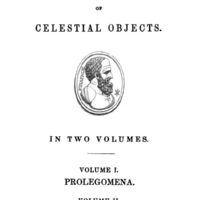Every now and then you run into a word that has you reaching for the dictionary. Or, more commonly these days, typing it into Google.
Poetaster?
Yeah, have to look that one up.
Continue reading “Odd Words”When you want to see the stars, find someplace dark
Every now and then you run into a word that has you reaching for the dictionary. Or, more commonly these days, typing it into Google.
Poetaster?
Yeah, have to look that one up.
Continue reading “Odd Words”As an evening pastime in these COVID restricted days I have been delving into the past again. Again reading the work of an amateur astronomer from long ago.

I had previously read through the work of Rev. Thomas Webb, a vicar and amateur astronomer active in the late 1800’s. Webb frequently refers to the work of a yet earlier observer, Capt. William Henry Smyth.
Retired British Navy Captain Smyth was a backyard observer, gazing at the stars with a 150mm refractor from a garden behind his home in Bedford England. His telescope was quite good for the time, made by Tully of London, the best money could buy. This telescope was eventually purchased by the British Government to be used in the 1874 transit of Venus expedition to Egypt and the 1882 Venus transit in Jamaica. It now sits in the collection of the Science Museum, London.
Smyth published two volumes on astronomy in 1844 under the title A Cycle of Celestial Objects . Volume II of this set, commonly called The Bedford Catalogue or The Bedford Cycle, contains descriptions of more than 850 double stars, clusters, and nebulae, serving as a guide to what may be observed with a small telescope. The Bedford Catalogue became the standard at-the-telescope reference for other amateur observers for many decades until it was generally replaced by Webb’s Objects for Common Telescopes.
Continue reading “A View from the Past”